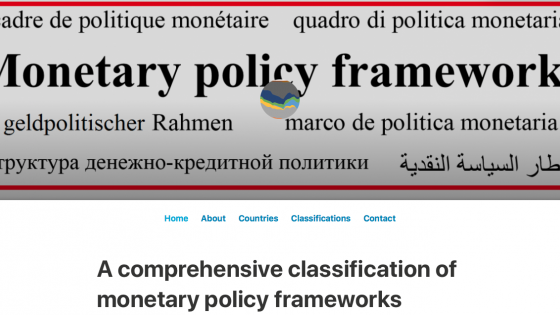First posted on:
mainly macro, 21 June 2018
John McDonnell wants to raise UK investment not by cutting corporation tax but by diverting funds from parts of the financial sector away from property to new investment by UK firms. That is a laudable aim. But giving the Bank of England that task with a 3% productivity target is not the best way to do it. And that is not because I think central banks cannot influence productivity.
The kind of toy model many people work with is that monetary policy is all about stabilising the business cycle, but that stabilisation has no impact on the medium-term level of output and productivity. That is because productivity is determined by the ‘supply side’ of the UK economy. And this toy model worked particularly well for the UK economy, which, from the early 1950s until before the Global Crisis, seemed to always bounce back to an underlying trend rate of growth for GDP per capita of around 2.25%.
However, over none of that period did we experience a recession where nominal interest rates hit their lower bound and fiscal policy turned from stimulus to austerity before the recovery had begun. In other words, in none of these periods did we have a persistent period of deficient demand with growth never exceeding its long-term average. I have argued that it is wrong to see the UK productivity puzzle as a period of uniform gloom since the recession, but rather that there were periods of growth which were set back by uncertainty following two additional major policy shocks: austerity and the EU referendum.
Yet, if you ask UK monetary policymakers whether they think they have done a good job over the last 10 years, they will say (in public at least) that they think they have. They do not say that they have failed because of shocks they couldn’t control, which would be a reasonable position, but rather that they have done reasonably well at controlling the economy. In the context of the slowest recovery for at least a century, with a consequent permanent hit to output (output is over 15% below previous trends), this degree of public self-satisfaction indicates a major problem. And if you ask them how they can possibly be satisfied, they will talk to you about inflation.
This is a clear reason to question the inflation target. Although in toy models, controlling inflation should also mean controlling output, the real world is much more confusing. By making the bottom line inflation, we are bound to make policymakers worry too much about inflation relative to output. The clearest case for me was 2011, when the ECB, and almost the Monetary Policy Committee, raised rates when the recovery from recession was only just beginning.
For that reason, I have long supported a more US-style twin mandate. Yet, although the US had a better recovery than the UK or the euro area, the Fed still seems to be giving inflation much more weight than employment. But you cannot ignore inflation completely. The mandate I propose for monetary policy is this:
- To maximise output growth, subject to maintaining inflation within 1% of its target by the end of a (rolling) five-year period.
Another thing we have learnt from the Great Recession is that policy has to change once nominal interest rates hit their lower bound. So I would, following Ben Bernanke, add to this mandate a ‘lower bound adaptation’ where the moment interest rates hit their lower bound, the inflation target would be converted into an equivalent path for the price level. That would mean that if inflation undershot its target during the recession, it would have to overshoot it before rates could be lifted above their lower bound. I would also require central banks, the moment they think rates will hit the lower bound, to say publicly that fiscal stimulus is now required to meet its target.
This is a dual mandate, but one that puts the emphasis on output rather than inflation.1 Why the 1% tolerance? Because it echoes current UK arrangements (when the governor has to write letters), but in practice because it will raise average inflation. This is a feature rather than a bug: another lesson of the last recession is that there is a strong case for a higher inflation target, but in a situation where the chancellor sets the target, it is very difficult to formally raise the target because many people think higher inflation means lower real wages.
Tasking central banks to maximise output subject to an inflation constraint is certainly better than setting a probably unattainable target for productivity growth, when we have no idea what the maximum productivity growth rate is. My suggestion is a dual mandate that puts the emphasis on output, and which makes clear that inflation is a medium-term concern, thus making it easier for central banks to see through temporary shocks to inflation like one-off depreciations. The nature of the target recognises that policy has to adapt when nominal interest rates hit their lower bound. Comments very welcome.
Endnotes
[1] What is the logic of giving inflation zero weight in the short run and total importance in the long run? The answer lies in asking what the costs of inflation are. Modern analysis looks at how, when prices are sticky but set at different times, inflation distorts relative prices. But inflation due to changes in flexible prices is costless. Now, it is not easy to distinguish between the two types of prices in price indices, but inflationary shocks that impact on flexible prices are likely to be short lived, while those that impact on sticky prices will be more prolonged. It therefore makes sense to ignore temporary changes in inflation (those that die out within five years), but, because of the vertical long-run Phillips curve, to have a medium-term inflation target.



